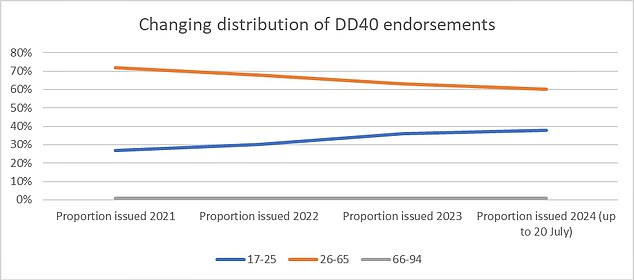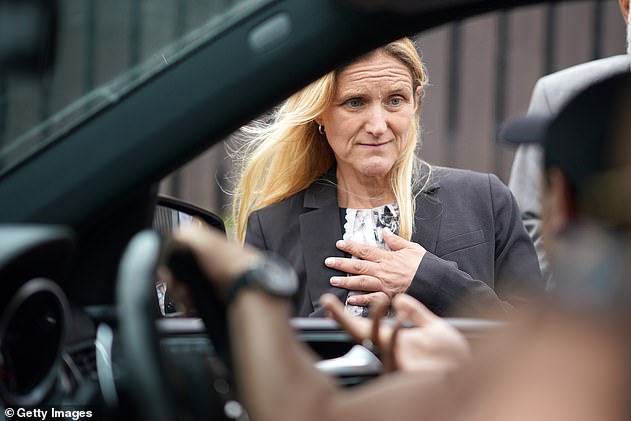Nearly two in five dangerous driving citations are issued to drivers aged 17 to 25. Is it time for a phased driving licence?
Shocking figures show that young drivers are responsible for almost two in five dangerous driving citations issued to motorists.
DVLA data shows that Between January and the end of May, 1,128 new dangerous driving notices (DD40s) were issued to 17- to 25-year-olds.
That represents 38 percent of all dangerous traffic violations committed in the first five months of the year, while this age group represents only 7 percent of all full driving license holders.
IAM Roadsmart, the road safety group that carried out the analysis of the government data, said the alarming figures highlighted the need for a phased licensing (GDL) system in the UK, which would impose restrictions that encourage “better decision-making” among young, impressionable drivers.
Is it time for a phased licensing system in the UK? Official data shows 38% of all dangerous driving notices are issued to the youngest drivers on the road
The Advanced Motoring Group says younger drivers pose an increasing risk on our roads.
Data from the DVLA shows that 27 per cent of all DD40 permits in 2021 were issued to people aged between 17 and 25.
In 2023, that percentage grew to 36 percent and in the first half of 2024 it increased again by two percentage points.
The DD40 dangerous driving annotation is issued for various offences. These are offences where someone drives far below the level that may be expected of a competent and careful driver, or where it is clear to a competent and careful driver that using a vehicle in its current condition would be dangerous.
This usually involves behaviour such as speeding, racing or driving aggressively, ignoring traffic lights, overtaking dangerously, or knowing that a vehicle has a dangerous defect or is carrying an unsafe load.
The fact that the youngest drivers on our roads commit almost two-fifths of these types of offences is yet another in a series of warning signs for novice drivers.
Road casualty statistics in the UK show that around a fifth of people will have an accident within a year of getting their driving licence. In 2022, almost 5,000 people in the UK were killed or seriously injured in crashes involving young drivers.
1,500 of these victims are young drivers themselves.
Of particular concern is that young drivers are four times more likely to have an accident if there is an additional passenger of the same age in the vehicle.

This graph shows how the youngest license holders have been responsible for an increasing percentage of dangerous driving offenses since 2021.
| AGE GROUPING | 2021 | Issued share | 2022 | Issued share | 2023 | Issued share | 2024 (until June 1) | Issued share |
|---|---|---|---|---|---|---|---|---|
| Under-17 | 2 | 14 | 39 | 1% | 45 | 2% | ||
| 17-25 | 1,585 | 27% | 1,677 | 30% | 1,928 | 36% | 1,128 | 38% |
| 26-65 | 4,130 | 72% | 3,772 | 68% | 3,378 | 63% | 1,785 | 60% |
| 66-94 | 59 | 1% | 50 | 1% | 55 | 1% | 34 | 1% |
| TOTAL | 5,776 | 5,513 | 5,400 | 2,992 |
Nicholas Lyes, director of policy and standards at IAM RoadSmart, said: ‘There is something wrong with driving standards for younger drivers. They now account for over a third of all new dangerous driving notices, despite being a tiny proportion of the total number of licence holders.
‘Some form of phased driving licence should now be considered as part of an updated road safety strategy.
“We believe that training, further education and broader experience will lead to greater responsibility and decision-making, making our roads safer.”
Mr Lyes added that drivers affected by GDL should be able to benefit from lower insurance premiums.
Both the RAC and the AA have supported the introduction of GDLs.
In April, the AA’s Motoring Manifesto found that almost three quarters of drivers (72 per cent) think a higher passenger capacity licence is a good idea.
Responding to the IAM Roadsmart report, a DfT spokesperson said: “The safety of our roads is an absolute priority for this Government.
‘We aim to develop a new road safety strategy, the first in more than ten years.
‘We will announce the next steps in due course.’

Batley and Spen MP Kim Leadbeater has been campaigning for road safety since shortly after she was elected in July 2021
Earlier this year, a bill was introduced for an advanced driver’s license was introduced in Parliament by Labour MP Kim Leadbeater.
The bill is supported not only by numerous security organisations, but also by all parties in the House of Commons.
This is the latest in a series of attempts to introduce GDLs into law in recent years – most notably in 2020 by Theresa May’s government – but so far none have succeeded, despite much parliamentary debate.
While the current bill is largely based on the same limited meeting time curriculum as previous GDL attempts, this time it is being introduced into Parliament under the ‘ten-minute rule’.
This rule allows a member of parliament from the constituency to explain his or her case for a new bill in a speech of up to ten minutes.
The bill was subsequently passed in first reading. A date for a second reading has yet to be announced.
Leadbeater has been committed to road safety since shortly after her election in July 2021.
She started GDLs after meeting Dr. Ian Greenwood, who lost his 12-year-old daughter Alice when the car her mother was riding in was hit by an 18-year-old driver.
Both the 18-year-old and his 16-year-old passenger were killed.

A GDL would require new drivers to go through a period of supervision during their first few months after passing their test. Only when they are deemed fit to drive alone would they be given a full licence.
How would a phased driving license system work?
A GDL would require all new drivers to go through various stages of experience, learning and restriction – from winter weather driving to passenger restrictions and late night driving – with supervision required.
As a new driver progresses through the various stages of guidance, he or she will be granted more privileges until he or she is issued a full, unrestricted driving license.
This allows novice drivers to gradually gain experience on the road, as various studies have shown that the first 1,600 kilometres that young drivers drive are the most crucial for their safety.
New Zealand is one of the countries where a similar program has been introduced.
Since the legislation came into effect, the number of traffic accidents with injuries among 15 to 19 year olds has decreased by 23 percent. Among 20 to 24 year olds, this is even 12 percent.
Similar arrangements are also used in other countries, including the US, Canada, Australia and Sweden.
Some links in this article may be affiliate links. If you click on them, we may earn a small commission. That helps us fund This Is Money and keep it free. We do not write articles to promote products. We do not allow commercial relationships to influence our editorial independence.
